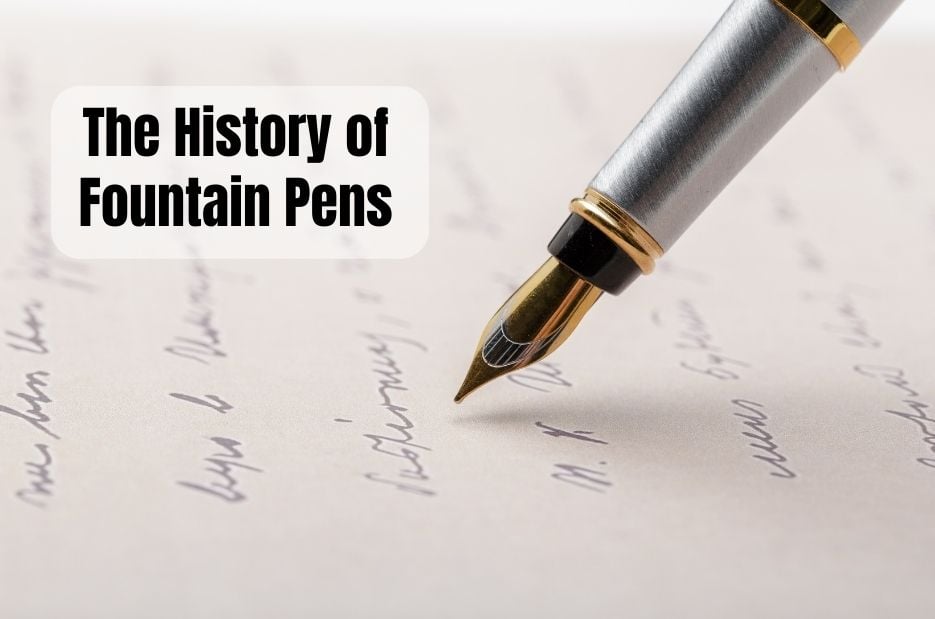History of the Fountain Pen

In the ever-evolving landscape of writing instruments, the fountain pen stands as a symbol of timeless elegance and precision. The journey of the fountain pen is a fascinating tale of innovation, addressing the limitations of earlier tools and transforming the act of writing into an art. Join us on a historical odyssey as we explore the captivating history of the fountain pen.
Quill Pens and the Call for Change:
Quill Pens and Limitations:
The use of quill pens dipped in ink was the prevalent writing method for centuries. While effective, this approach came with challenges such as the need for frequent dipping, potential ink spills, and the inconsistency of ink flow.
The Need for Innovation:
As the demand for a more convenient and reliable writing instrument grew, inventors set out to create a pen that would overcome the limitations of quill pens. The stage was set for the invention of the fountain pen.
Lewis Waterman and the Capillary Feed System:
Lewis Waterman's Pivotal Moment:
The credit for the invention of the fountain pen is often bestowed upon Lewis Waterman, an American insurance salesman. Legend has it that Waterman's determination was sparked when a leaky pen ruined a business deal.
The Patent (1884):
In 1884, Lewis Waterman successfully patented his revolutionary design for the fountain pen. Central to his invention was the capillary feed system, which ensured a consistent and controlled flow of ink to the nib while preventing leaks.
The L.E. Waterman Company:
Establishing Excellence:
Waterman's breakthrough led to the founding of the L.E. Waterman Company, a name that became synonymous with high-quality fountain pens. The company's commitment to craftsmanship and innovation set the standard for the industry.
Evolution and Contributions:
Continued Innovations:
While Lewis Waterman's invention marked a pivotal moment, it's essential to acknowledge the collective evolution of fountain pens. Various inventors and improvements to designs preceded and followed Waterman's contributions.
Materials and Nib Designs:
Subsequent innovations included the use of different materials for pen bodies, advancements in nib designs, and improvements in filling mechanisms. These enhancements contributed to the diverse array of fountain pens available to users.
Fountain Pens in the Modern Era:
Enduring Appeal:
Despite the advent of alternative writing instruments, the fountain pen's allure endures. Its smooth ink flow, varied designs, and the ritual of filling the pen have solidified its place as a cherished writing tool.
Modern Craftsmanship:
Today, modern fountain pens pay homage to their rich history, blending traditional craftsmanship with contemporary design. Artisans and manufacturers continue to innovate, ensuring that the fountain pen remains a symbol of refined writing.
The history of the fountain pen is a testament to human ingenuity and the pursuit of a more graceful and efficient writing experience. From Lewis Waterman's groundbreaking invention to the myriad designs available today, the fountain pen has transcended its utilitarian function to become a cherished artifact of artistry and sophistication. As we write with these elegant instruments, we partake in a tradition that bridges centuries, connecting the past with the present in every stroke of ink.
Thank you,